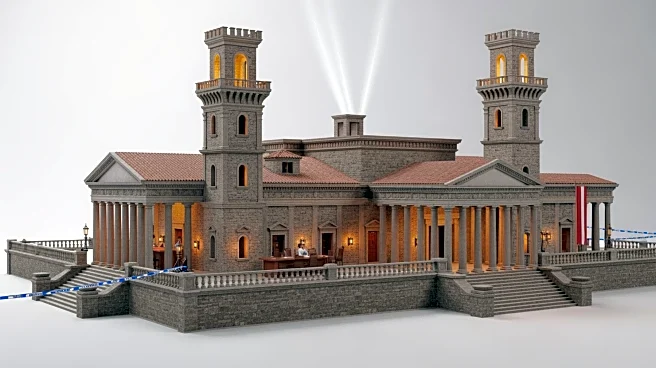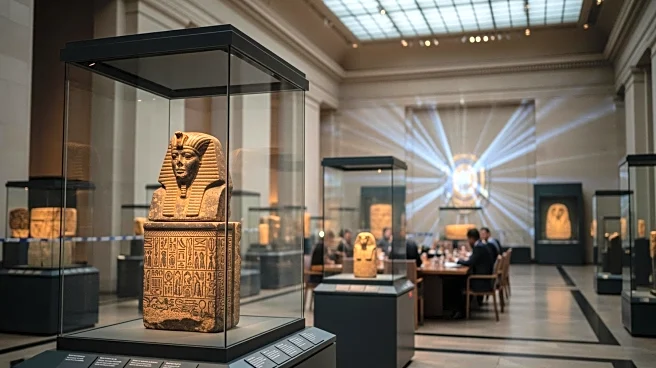What's Happening?
Archaeologists have digitally reconstructed the residential towers of Pompeii's elite villas using 3D models, revealing upper-level luxury dining spaces with panoramic views. The project, led by Berlin's
Humboldt University, challenges previous assumptions that these upper floors were simple spaces used for cheap rentals or slave quarters. The findings suggest that high-level rooms existed alongside more modest ones, offering insights into ancient architecture and social life.
Why It's Important?
The reconstruction of Pompeii's towers provides a new perspective on the architectural and social dynamics of ancient Roman society. It highlights the complexity and sophistication of elite residences, offering a deeper understanding of the lifestyle and status of Pompeii's wealthiest citizens. This research contributes to the broader study of ancient urban planning and the role of architecture in social hierarchy.
What's Next?
Further exploration of Pompeii's upper floors and other buildings in the area could reveal more about the city's architectural innovations and social structures. The use of 3D modeling and digital reconstruction techniques may continue to enhance archaeological research and interpretation.
Beyond the Headlines
The study emphasizes the importance of considering all aspects of ancient architecture, including upper floors, to fully understand historical urban environments. It also raises questions about the relationship between architecture and social status in ancient societies.












